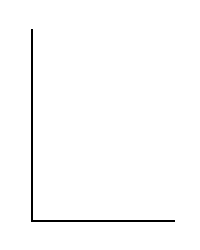Or search by topic
Number and algebra
Geometry and measure
Probability and statistics
Working mathematically
Advanced mathematics
For younger learners
Sticky Data



- Problem
- Getting Started
- Student Solutions
- Teachers' Resources
Sticky Data
This activity is designed to be worked on in a large group or as a whole class. For more information, please read the Teachers' Notes.
Everyone in your group or class will need a sticky note. Write your name on it. You could even draw a picture of yourself on it too.
You'll also need some large sheets of flipchart paper or you could work on the board or the floor.
Draw two long lines on the paper/board/floor, something like this (you might ask an adult to do this for you):

You're going to use your sticky notes and the lines to help find out the answers to some questions. Here are some questions to start you off:
- How many boys and how many girls are there in your group?
- Which month has the most birthdays for your group?
- How old are the children in your group?
We would love to see photos of the bar charts you create and to know how you went about making them. Could you give a name to the lines in each case?
You will have questions of your own as well. We'd like to hear about the questions you asked and to see the bar charts you made to help answer them.
Why do this problem?
Possible approach
You could begin this activity using the children themselves to create a block graph. Pose a question for the class to answer. A good one to start with would be "how could we show how many girls and boys there are in our class?".
Take ideas and if not already suggested, sit or stand the children in two lines. Which line is the longer?
Ask another question, for example, "how could we show how many children have school dinners and how many don't?".
Again after suggestions, sit or stand the children in two lines and talk about what they notice.
Now give each child a sticky note and ask them to write their name on it and decorate it in some way, should they wish.
How could we use the sticky notes to answer the same questions? Give learners time to have a think themselves, then talk to a partner, then share with the whole group (think - pair - share). Some may suggest sorting or grouping the sticky notes on opposite sides of the board, which you could try to begin with. The disadvantage of this method is that it's not so easy to compare the number of boys with the number of girls (unless of course there is a large difference between the two numbers!). Ask the class how the sticky notes could be arranged to make the counting easier. At this point, some may suggest lining the sticky notes up in two rows or two columns, just as they had been doing at the beginning of the activity. You could then superimpose the axes of the block graph as a way of framing the picture, and invite children to suggest labels for each axis. If your class is familiar with block graphs, you could draw the axes on the board right from the beginning.
Having had a go at one block graph all together, you could encourage the children to answer the other questions posed in the problem. They will also have their own ideas. Bear in mind that learners may find it easier to display qualitative data (such as boy/girl as above, birthday months) as opposed to quantitative data (such as number of siblings, number of pets, height) against the number
of children. This is because when showing quantitative data, labelling the axes can be more tricky. This might be the case particularly with continuous data (those that use a scale, such as height) rather than discrete data (such as number of pets). However, try not to discourage children from posing questions involving quantitative data. Instead, listen to their
discussions as they work out what to do.
You may be able to address the above issues to some extent in a plenary by asking the whole group which question they found most difficult to display and why.
Key questions
Possible extension
Possible support

